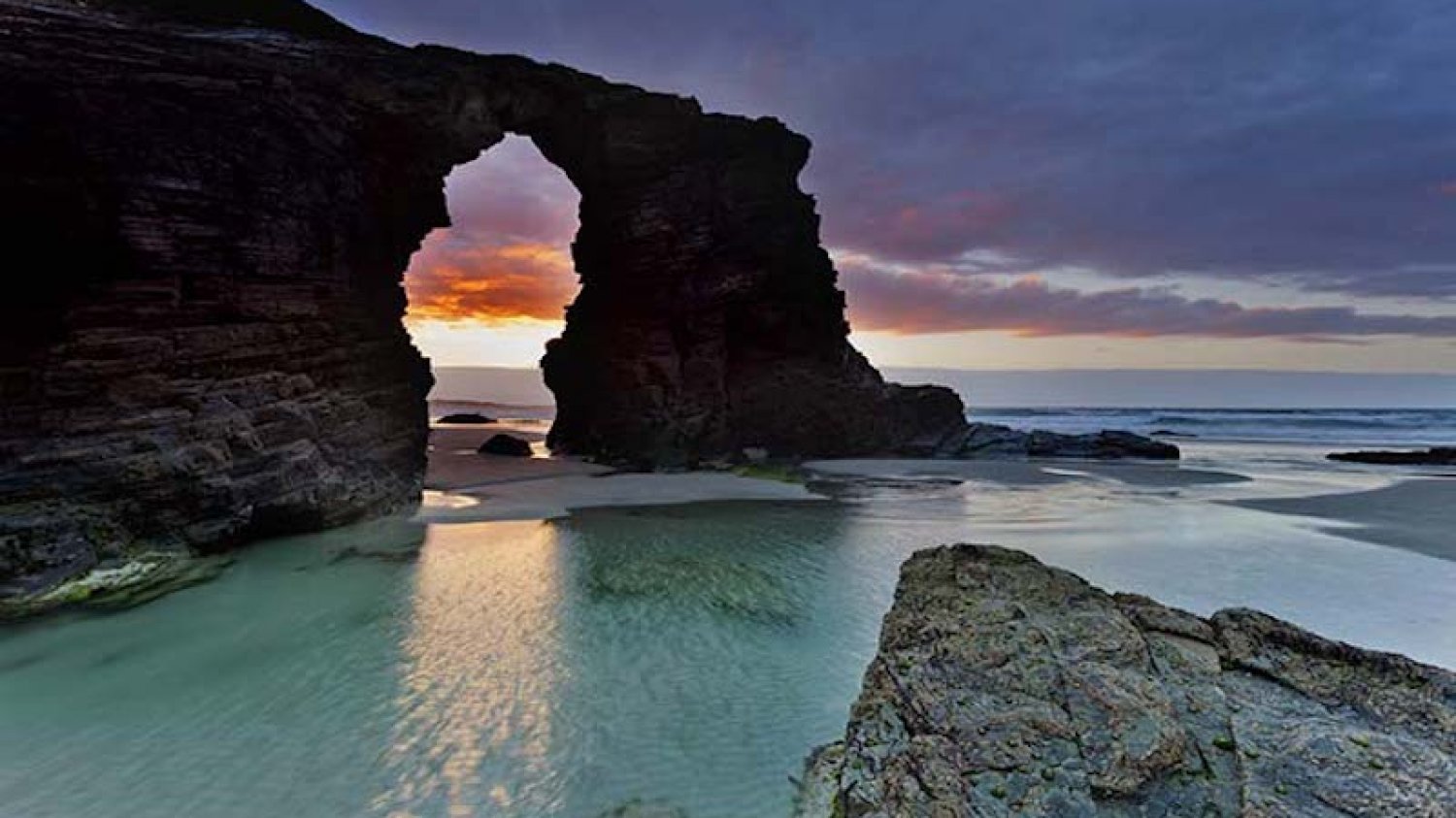
Create your own journey; Experience the best of Northern Spain at your own pace
This website uses its own and third-party cookies, for the proper functioning of the site and to generate usage statistics.
By continuing to browse we understand that you consent to our �ookie policy

2017-01-30
For thousands of years, the Cantabrian Sea has periodically engulfed the massive rock formations on Cathedrals Beach in Galicia, northwestern Spain, chipping the softened rock into soaring arches and dark caves. But as well as sculpting this revered and popular landscape, the constant floods may have also washed away evidence of ancient hidden treasure.
After the Romans conquered Galicia about 2,000 years ago, joining the territory to the vast and powerful Roman Empire, they minted coins with gold mined in the area. The Galician government, which still oversees abundant reserves of the precious metal, has recognized several local gold mines discovered and exploited by the invaders, who may have also extended their hunt for gold to the wet and weathered caves of Cathedrals Beach.
“Galicia is an area very rich in gold, and Cathedrals Beach is surrounded by gold mines,” said Manuel Miranda, president of Mariña Patrimonio, a cultural preservation group pushing the Galician government to examine potential evidence of a Roman gold mine at the beach.
“The Romans knew perfectly well the great abundance of gold there was in this area, which is why they conquered it. We’re saying there is a possibility that there could also be a gold mine exploited by the Romans at the beach.”
The government, however, has expressed more interest in protecting Cathedrals Beach (known in Galician both as As Catedrais, or The Cathedrals, and Praia de Augas Santas, or Beach of the Holy Waters) than commissioning a study on its past. It recently capped the number of people who can visit the popular site on peak travel dates, requiring online reservations for up to 4,812 visitors daily from July through September, and during Holy Week in the spring, a holiday in Spain when many residents travel. Nearly 250,000 reservations were made last summer, most of them by domestic travellers, according to the Galician government, which declared the beach a Natural Monument because of the beauty and rarity of its rock-studded vista. During low tide, visitors can walk along the shoreline, beneath the rock arches and inside the caves. Once the tide rises, the ground disappears under seawater, and the tops of the impressive rock formations can be viewed from cliffs.
The beach stretches along the coast of Lugo province in Galicia, a region best known for pilgrimages by foot to St James Cathedral in its capital, Santiago de Compostela, the reputed burial site of the saint. The pilgrims can continue to Cape Finisterre, a peninsula on the west coast of Galicia, which was considered the end of the world during the Roman era. A prehistoric circle of stones a mile from Cathedrals Beach, its purpose unknown, has been likened to Stonehenge in England.
Before those legends arose, about 350 million years ago, the ancient continents Laurussia and Gondwana collided, breaking apart a mountain range as tall as the Himalayas. It’s believed the rocks on Cathedrals Beach came from those mountains.
In the meantime, the beach continues to lose traces of its history. Miranda hopes to unravel the area’s latest mystery and find the last vestiges of the past before they are gone, swallowed by the sea.
“There could have been signs of human intervention in a gold mine on the beach that have since been eroded by the wind and sea,” he said. “It’s impossible to find the evidence because much of it has been destroyed. So, it’s necessary to look for evidence around the beach, above sea level.”
On a cliff overlooking Cathedrals Beach and the sea, geologists found an un-dated manmade canal carved in the ground, which bears similarities to canals used by the Romans to excavate gold mines in the area. During their searches for gold, the Romans would light fires on the ground and douse the flames with water carried by the canals, a process that cracked the ground so they could dig with hand tools, Miranda explained.
Another clue can be found inside the caves.
“Considering that close to Cathedrals Beach there are mines that contain quartz veins, and those quartz veins have gold, we could conclude that the quartz veins on the beach might also have gold,” Miranda said.
Excavators near the beach have also found a Roman furnace used to make ceramics and fragments of dolium, earthenware containers used during Roman times to move and store goods, which could further link the invaders to the beach.
If the findings prove the Romans did search for gold on the beach, historians can begin to retrace their steps. Miranda pointed out that the Romans would have mined amid a sea level lower than the current sea level, which has been rising due to global warming.
“The coastal strip would not have looked the same during the Roman era as we see it now,” he said.
What exactly the Romans saw on Cathedrals Beach looks set to remain a mystery.
“Maybe one day an archaeologist will be interested in investigating Cathedrals Beach,” Miranda said hopefully, noting that the result could change history.
Until then, the secrets of the past will remain under the rise and fall of crashing waves.
By Anna Bitong
8 November 2016
http://www.bbc.com/travel/story/20161104-in-spain-a-beach-made-of-gold
Back